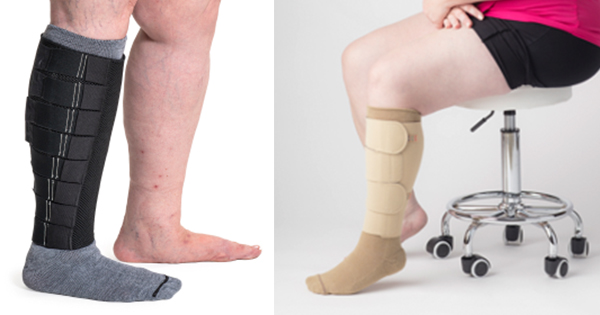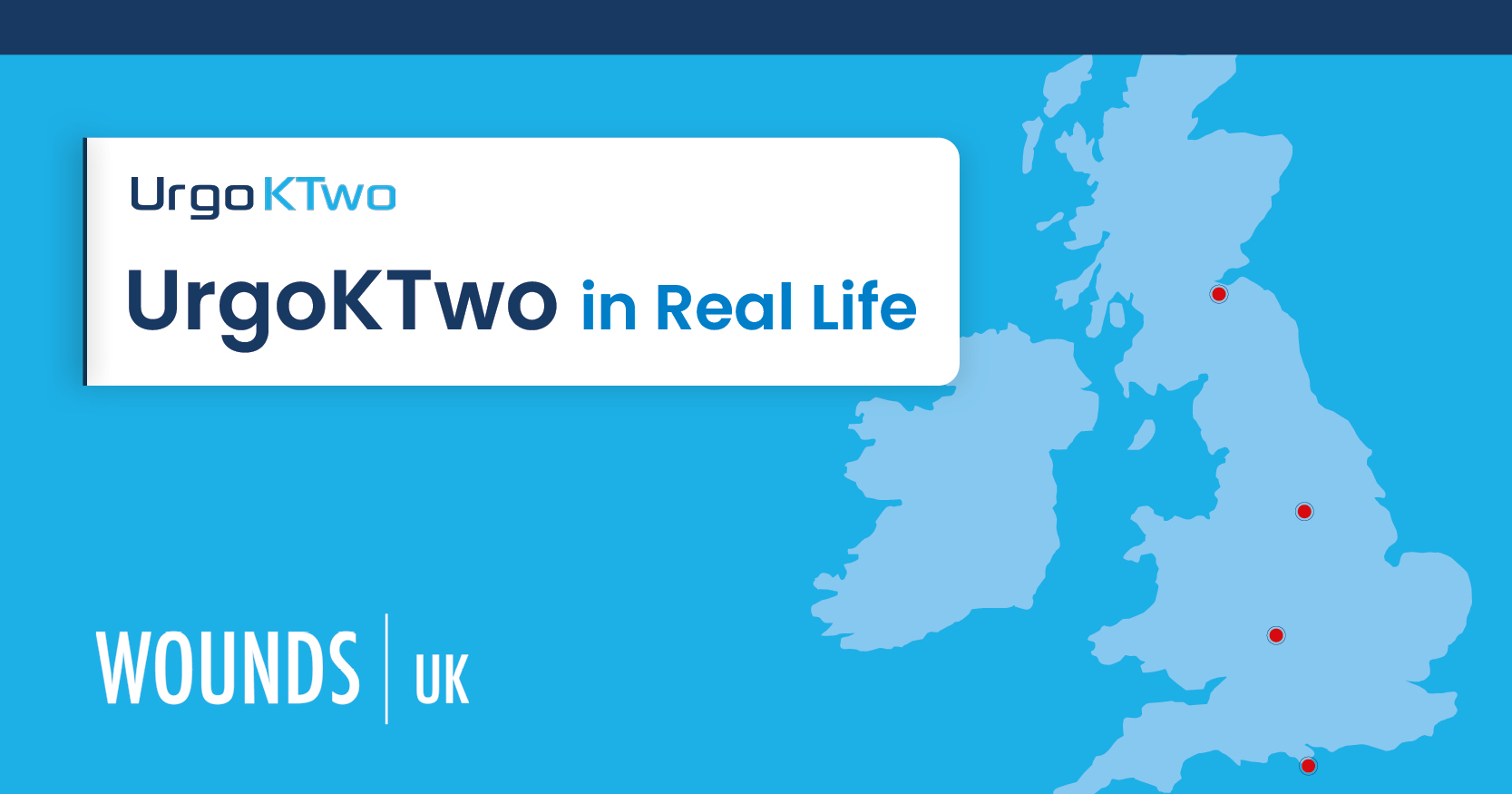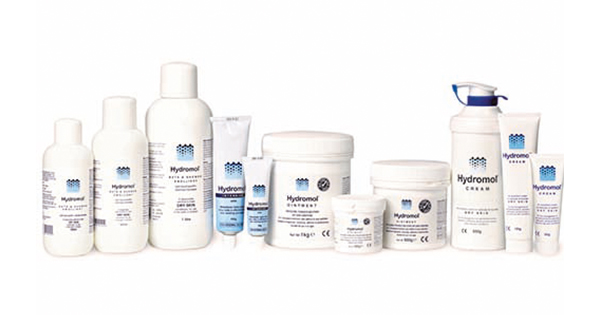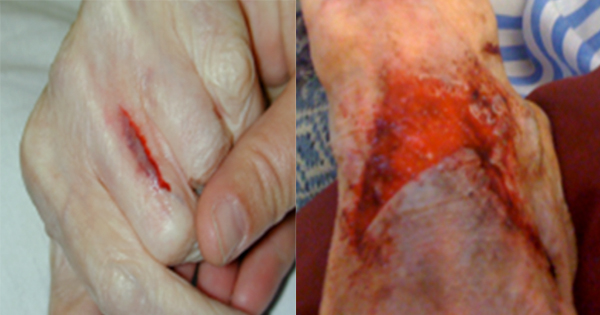This meeting report is based on a ‘Made Easy’ workshop that took place at the Wounds UK Annual Conference in Harrogate on 12 November 2024. The workshop and meeting report were sponsored by an educational grant from SIGVARIS GROUP.
The workshop was opened by Jane Todhunter (Advanced Vascular Nurse Practitioner), who outlined the learning objectives of the session:
- Recognising and treating varicose eczema.
- Exploring the link between varicose eczema and cellulitis.
- Developing knowledge to overcome barriers and improve patient outcomes.
The focus was on the link between varicose eczema and cellulitis, with practical tips for overcoming barriers and improving patient outcomes through the appropriate use of inelastic compression wrap systems. In recent years, the National Wound Care Strategy Programme (NWCSP, 2024) has highlighted the lower limb and pathways of care, but guidance is still lacking regarding varicose eczema specifically.
Background and physiology
To identify the root causes, it is important to understand the venous system, how it works and what can go wrong [Figure 1 and Figure 2].
The body’s venous system is a low-pressure system, with the heart performing the main pumping mechanism, often working against gravity (i.e. blood being pumped upwards to the heart from the lower limbs). The calf muscle pump mechanism is usually activated by movement in the feet and legs (e.g. walking), which squeezes the deep veins to pump blood ‘uphill’ to the heart. There are also small valves within the veins that aid this mechanism.
Venous hypertension – or loss of action of the calf muscle pump (e.g. through trauma, orthopaedic surgery, mobility issues/conditions) – can mean loss of this functional pumping action, effectively resulting in functional loss of venous competence. The valves within the veins may also ‘wear out’, as these are naturally relatively thin and delicate; conditions such as deep vein thrombosis (DVT) may cause damage that reduces their function.
This damage causes blood reflux back through the valves; this means that blood is ‘sitting’ in the veins instead of being efficiently pumped. This can result in varicose veins, swelling and other issues, as well as ‘flooding’ of the surrounding tissues, as blood and fluid leak out. This series of events, in turn, causes skin damage, as the body’s inflammatory response in the area is activated. Chronic venous skin changes, because of this inflammatory response, increase the risk of developing a lower limb ulcer.
One result of chronic inflammation of the skin can be varicose eczema, which can be common in these circumstances but is still under-recognised in practice. Varicose eczema often presents as skin discolouration. This usually appears as red/brown patches in light skin and purple/grey patches in dark skin.
Varicose eczema can be intensely itchy for the patient, with scratching causing further inflammation. This can result in a vicious cycle of fragile skin and further damage. Additionally, varicose eczema can be either wet or dry; dry eczema can become wet with further irritation, resulting in wet/leaking legs and crusting of fluid. All these factors can have a significant impact on the patient’s quality of life.
Treating varicose eczema
Accurate identification and early intervention are key. It can be easy for the clinician to think that the skin is simply ‘a bit red and irritated’ and adopt a ‘watch and wait’ approach to see what happens and whether treatment is required. However, if varicose eczema is suspected, taking quick action is essential.
The gold-standard treatment for any suspected varicose eczema is the application of a topical corticosteroid preparation, along with emollients to care for the skin, ideally applied twice a day (using an ointment for dry eczema and a cream for wet eczema). However, identifying the condition and initiating prompt treatment can be challenging in clinical practice, especially when the patient is also using compression.
The general rule for topical steroid use is a ‘step up, step down’ approach, starting with the lowest-strength steroid that is effective, and increasing to a more potent formulation only if needed (NICE, 2024). Once a steroid application regimen has commenced, it should not be stopped abruptly, as this can cause a rebound effect. The product will need to be stopped gradually, either by reducing the application frequency or strength of the product.
The range of steroid potency can generally be classified as:
- Mild: Hydrocortisone 1%
- Moderate: Eumovate
- Potent: Betnovate
- Very potent: Dermovate.
Best practice recommends applying the emollient first, allowing it to soak into the skin, and then applying the steroid 30 minutes later. However, this approach can be challenging in a busy clinical setting. Time constraints often mean that products must be applied concurrently, which is not optimal but preferable to leaving the skin untreated.
Identifying and managing the underlying cause
The underlying cause of varicose eczema is venous insufficiency. Therefore, it is important not only to treat the skin, but also to identify and manage the underlying cause. Venous insufficiency can be managed using compression therapy. There is also a need to treat the root cause of venous insufficiency, which means that patients should be referred to vascular services for further investigation and treatment.
A workshop attendee asked about issues of waiting times for referrals and how best to manage this within the resources available. It was agreed that the delay can be problematic when waiting for referrals, so it is important to make sure the patient has a skincare and compression plan in the meantime, while waiting for further investigation or treatment.
Choose an emollient wisely
A skincare regimen that includes emollients is needed for all patients with suspected varicose eczema. With a range of emollient products available, the key message was to ‘choose an emollient wisely’. Selection should be based on the patient’s individual needs and preferences, as well as the products available.
These may include simple emollients, available in various formulations, as well as more complex emollients, which contain humectants — ingredients that actively draw water into the skin, increasing moisture balance.
It is important to note that, as skin ages (in patients over the age of 40), the skin progressively loses its lipid layer, becomes drier and requires the use of more complex emollients. This means choosing an emollient product that will actively draw in water and restore moisture to the skin (Wounds UK, 2015).
For most patients, emollients should ideally be applied twice daily. However, again this is not always possible, particularly in patients who are concurrently using compression therapy. To compensate for less frequent application, a heavier emollient is sometimes used, but as a best practice, this should still be applied as frequently as possible.
However, it should be noted that the best emollient option is always the one that the patient will actually use in practice. If the patient does not like using a particular product (e.g. if it is too heavy or greasy), an alternative needs to be used. In all emollient use, it is important to strike the correct moisture balance and not cause maceration or further irritation. Additionally, folliculitis can occur if emollients are not applied in the direction of hair growth, which in turn can increase the risk of infection and cellulitis.
Varicose eczema treatment in practice
Participants in the workshop were invited to view case study pictures from clinical practice, to explore how they would assess and treat patients in these clinical scenarios.
Participants were asked whether a photo [Figure 3] showed varicose eczema, and what could be done to treat the skin. The majority (81% on average across sessions) agreed that the patient pictured was presenting with varicose eczema. Meanwhile, a further 29% responded that they were ‘not sure’ of the correct diagnosis. Jane explained that varicose eczema was present in this patient, as seen in the red patches. She noted that some of these areas may also be hyperkeratosis but determined that varicose eczema could still be confirmed as a diagnosis.
This patient would need an ointment-based, thick emollient, washing thoroughly with an antibacterial cleansing solution, and a steroid preparation. Participants discussed whether steroid application would be more appropriate as an ointment or cream, noting that ointment is better for dry skin, while cream is preferable for wet skin. This patient should also continue using compression therapy.
Participants were asked whether skincare or compression would be considered a higher priority for the patient’s leg shown in Figure 4. It was agreed that both were equally important. However, it can be difficult to apply emollients twice daily when the patient is in compression.
Most participants (58%) responded that the patient should be treated with a twice-daily emollient and topical steroid. A further 39% thought that the patient’s treatment should continue weekly, incorporating a complex emollient and steroid ointment, as well as compression therapy.
Barriers to effective treatment of varicose eczema
The debate over appropriate treatment for the case studies illustrated that varicose eczema can be challenging in practice, with gold-standard treatment often difficult to achieve due to practical clinical constraints. Major barriers to effective treatment of varicose eczema can include:
- Patients treated with compression therapy, which makes regular and timely application of emollients and steroids challenging
- Patients being seen only once or twice per week by a healthcare professional
- Compression hosiery being painful to don and doff over irritated skin.
Case study: varicose eczema with difficulty managing compression hosiery
This patientattended the clinic with her granddaughter. She previously managed compression hosiery herself, but had recently struggled to reach her feet to put them on and take them off. As a result, she had been wearing the same compression stockings for several days at a time and sleeping in them, waiting until her granddaughter could help her change them and wash her legs.
The patient had been unable to apply an emollient daily and her eczema had flared up as a result [Figure 5]. She reported that her legs were itchy/inflamed and she could no longer tolerate wearing her stockings at all. Consequently, her legs became more swollen. The patient had previously suffered from chronic oedema with cellulitis and was now afraid of developing another infection in her leg.
The solution for this patient was to use inelastic compression wraps, which enabled the patient to manage her own compression. She was also able to put the inelastic compression wrap on and take it off herself, enabling her to apply an emollient and allowing her legs to get the moisture they needed. The improvement in treatment and quality of life for this patient demonstrated how inelastic compression wrap systems can facilitate better skincare, by making self-care easier for the patient.
Lower limb cellulitis
There are recognised links between varicose eczema and cellulitis, which put the patient at increased risk. These risk factors include:
- Cracked, leaking or macerated skin
- Leg ulcers.
- Leg oedema.
- Lymphoedema.
- Tinea pedis.
- Venous hypertension.
- Obesity.
Cellulitis is an acute, spreading bacterial infection of the dermis and subcutaneous tissues, which is associated with significant morbidity and poor quality of life for the patient. It is also costly for the NHS, with previous estimates suggesting annual costs of up to £254 million per year (Atkin, 2016) and it results in an increased workload for clinicians.
The first clinical signs of cellulitis often include flu-like symptoms. The patient’s skin may become red, hot, swollen and painful, with a clear line of demarcation between the normal and affected skin. Additionally, lymphangitis, blistering or ulceration of the skin may occur, sometimes with superficial haemorrhage inside blisters. Local lymph nodes may also feel tender.
It is important to note that, cellulitis typically affects only one leg; it is unlikely to be bilateral. Varicose eczema is often misdiagnosed as cellulitis (Patel et al, 2019). If the patient is not unwell, while having systemic signs of infection, the diagnosis is also unlikely to be cellulitis.
When cellulitis is diagnosed, it must be treated promptly with antibiotic therapy. It is also crucial to get the patient into compression as early as possible, along with good skin hygiene and emollient therapy.
In some instances, the patient’s leg may not fully recover from cellulitis, leaving residual leg swelling. The protein-rich fluid associated with swelling creates an ideal environment for bacterial growth, which means that any break in the skin can lead to further episodes of cellulitis.
Introducing compression therapy as early as possible is key: it supports the leg and healing, reduces pain, and lowers the risk of recurring episodes. Lifestyle changes (e.g. BMI reduction, improved mobility, smoking cessation, and better nutrition) may also play a part in long-term management and patients should receive support to implement these changes.
Inelastic compression wraps are particularly beneficial in this treatment, as they improve accessibility and patient quality of life, allowing them to manage their own compression therapy. Wraps also allow for compression to be adjusted as needed, as the leg reduces in size.
Problem-solving with inelastic compression wraps
Katy Stevens (Clinical Nurse Advisor, SIGVARIS GROUP) continued the session by highlighting the role of inelastic compression wraps in practice. She presented a case study illustrating their use. Figure 6 shows the patient on presentation to the clinic.
The patient was a 77-year-old female with a history of recurrent leg ulcers for 9 years. She attended the leg ulcer clinic weekly and there had been little improvement. Treatment included:
- Multilayered (four-layer) bandaging system.
- Short-stretch compression.
- 40 mmHg hosiery kit.
- Class 2 compression stocking.
- Biopsy (showing no malignancy).
On further assessment, the underlying cause was identified as untreated varicose eczema. The patient had not previously followed daily washes and skincare. As a result, a new regimen was implemented, consisting of:
- Good hygiene and skin care practices.
- Simple non-adhesive dressing.
- Sigvaris COMPREFLEX calf wrap in conjunction with a Sigvaris liner to reduce the risk of foot oedema.
With this new treatment regimen, the patient’s leg healed within 6 weeks [Figure 7]. She continued to wear the compression calf wrap
for maintenance, as she found it comfortable and easy to apply and remove. The patient felt empowered to manage her own treatment and could change her own dressings between clinic visits.
COMPREFLEX and COOLFLEX calf wraps
A variety of Sigvaris inelastic compression wraps are available for use in practice, depending on the individual needs and preferences of the patient.
Wraps have been shown to support self-care, improving patient engagement and quality of life. They have also been shown to reduce nursing visits, which lowers clinicians’ workloads and means patients attend fewer appointments.
All the COMPREFLEX [Figure 8] and COOLFLEX [Figure 9] wraps are machine washable and quick drying. Compression levels can be adjusted based on the patient’s needs and progress (providing 20–50mmHg in one garment). A reduced level can be applied if the patient cannot tolerate higher levels of compression, so they receive some compression. COOLFLEX has built in tabs; COMPREFLEX uses ACCUTAB™, which can be used to gauge the level of compression applied.
The COOLFLEX wrap, with a hook-and-loop system, may be more suitable for patients who struggle with dexterity. These wraps are easy to apply and remove, making compression more accessible to these patients.
Choosing the appropriate liner is also important: basic, transition and complete liners are available. The breathable cotton liners promote air circulation, which is particularly beneficial for managing patients with skin conditions where compression therapy is a key part of their treatment.







